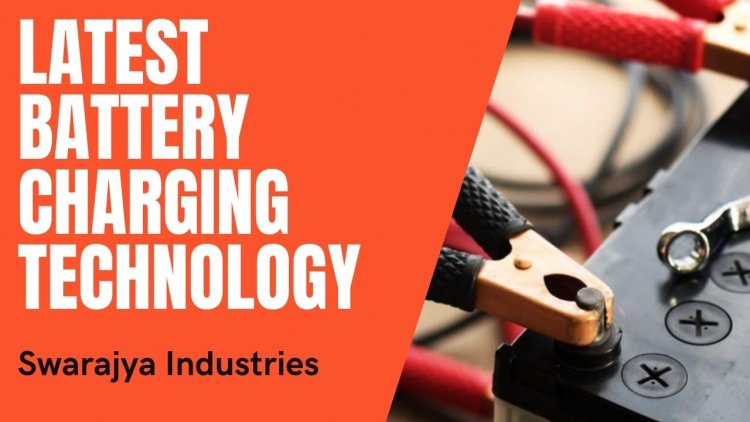Latest Battery Charging Technology
Latest Battery Charging Technology by Swarajya Industries - Mr. Srikant Uppal.

Presented by - https://www.ebatterydirectory.com/listing/chargers/swarajya-industries
Constant Voltage
Constant Voltage Charging: A constant voltage charger is basically a DC power supply which in its simplest form may consist of a step down transformer from the mains with a rectifier to provide the DC voltage to charge the battery. Such simple designs are often found in some car battery chargers. The lead-acid battery used for cars and backup power systems typically use constant voltage chargers.
Constant Current
Constant Current Charging: Constant current chargers vary the voltage they apply to the battery to maintain a constant current flow and switch off when the voltage reaches the desired level of a full charge.
Taper Current
Taper Current This is charging from a crude unregulated constant voltage source. It is not a controlled charge as in V Taper above. The current diminishes as the cell voltage (back emf) builds up. There is a serious danger of damaging the cells through overcharging. To avoid this the charging rate and duration should be limited.
Constant Current Constant Voltage
Constant Current Constant Voltage Charging: This CC-CV charging is the one of the most popular way of battery charging. In this method constant current is applied to the battery with increasing voltage. After reaching the desired voltage current becomes decreasing with maintaining constant voltage and current tends to almost negligible which called trickle charging. In this way battery doesn’t get over charged and compensates self discharging.
Pulsed Charge
Pulsed charging: Pulsed chargers feed the charge current to the battery in form of pulses or pulse train at the frequency from 100Hz to several kHz. The charging rate (based on the average current) can be precisely controlled by varying the width of the pulses. During the charging process, short rest periods between pulses allow the chemical actions in the battery to stabilized by equalizing the reaction throughout the bulk of the electrode before recommencing the charge. This enables the chemical reaction to keep pace with the rate of inputting the electrical energy. It is also claimed that this method can reduce unwanted chemical reactions at the electrode surface such as gas formation, crystal growth and passivation. It is also possible to sample the open circuit voltage of the battery during the rest period.
Burp Charging
Burp charging Also called Reflex or Negative Pulse Charging. It applies a very short discharge pulses between every two consecutive charge pulses to depolarize the cell. These pulses dislodge any gas bubbles which have built up on the electrodes during fast charging, speeding up the stabilization process and hence the overall charging process. The release and diffusion of the gas bubbles is known as "burping". Controversial claims have been made for the improvements in both the charge rate and the battery lifetime as well as for the removal of dendrites made possible by this technique. The least that can be said is that "it does not damage the battery".
SWARAJYA INDUSTRIES - Delhi
Presented at 15th Power On - Indore - https://www.batteryfair.co.in/






















